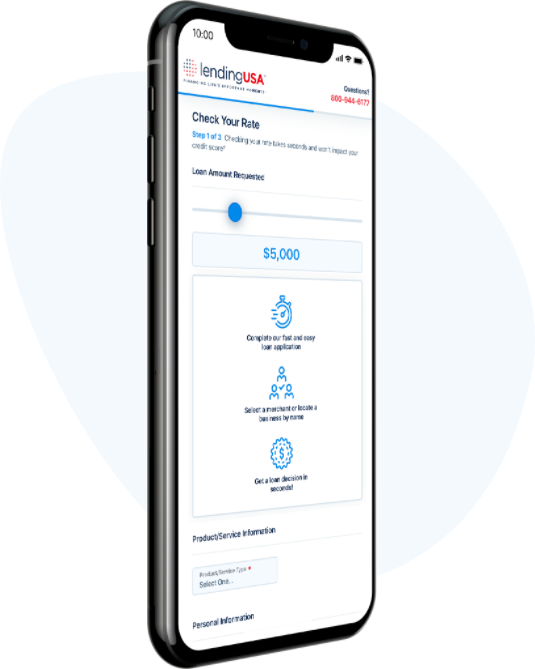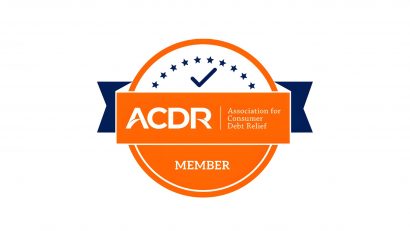We offer fixed payment amounts and fixed terms for our dermatology patient financing—credit cards can’t do that. This gives you greater flexibility and control over how you manage your monthly expenses. It also allows you to pay no interest on your principal if you pay off your dermatology loan in full within the first six months of your disbursement date*.

What makes our dermatology better than a credit card?
Application Time
In Minutes
Pre-Approval Decision
In Seconds
You can apply online, from anywhere. Simply provide the required information, choose your options, and sign the online agreement. The entire process is quick, simple, and secure.
Benefits of LendingUSA Dermatological Financing
Increased
Buying Power
With high loan amounts, you won’t need to settle for services you don’t want.
Affordable
Monthly Payments
Select a monthly payment amount that fits comfortably into your household budget.
No
Interest Promotion
Pay $0 in interest when you pay off your loan in full within 6 months*.
MORE INFORMATION
Dermatological financing
Your skin is one of the first things that people will notice about you when they meet you. If you have bad skin filled with acne, blemishes, or other skin-related issues, you may go through your day lacking confidence and feeling self-conscious about your appearance. That is why seeking skin treatment from a dermatologist is the first and most important step to addressing any skin-related issues you may have. Doing so can give you your confidence back and increase your self-esteem. Plus, having healthy skin is simply just something you want to obtain for overall health purposes. You want your skin to be able to process and sweat out toxins from your body without breaking out in acne or other rashes.
Although we all want healthy and good looking skin, dermatologists are not cheap. Seeing a dermatologist can be expensive since they are considered a “specialist.” A simple consultation could end up costing you hundreds of dollars if your insurance does not cover the visit, or only covers a portion of the visit. This is before you even begin any treatment or undergo any procedures. So, how are you supposed to pay for your dermatology bills? With dermatology financing, you can pay for your consultation with the specialist and any subsequent treatments or procedures that your dermatologist recommends. You can even use dermatology financing to cover the cost of any prescription medications needed to help treat skin conditions.
If you need dermatology financing, LendingUSA is here to help. Keep reading to learn more.
Can dermatology bills be financed?
Yes, just like any type of medical bill, dermatology bills can be financed easily through LendingUSA. If you are looking to secure funds to pay for dermatologist-approved elective laser surgery or any other type of procedure up to and including medication, LendingUSA can provide the money to cover the costs of all your dermatology medical needs.
To finance your dermatology procedures or bills, the first step you should do is see if you prequalify for a medical loan through LendingUSA. The process to prequalify is extremely easy and it all can be done within minutes from the comfort of your own home.
The preapproval process begins by you entering in some personal information as well as information about salary and employment status. Once submitted, LendingUSA will conduct a “soft pull” credit check which allows the lender to view your credit history without impacting your credit score like a hard inquiry does.
Once the soft pull credit check is complete, you will be able to find out how much you can qualify for and at what interest rates. You can instantly prequalify for up to $12,000 to cover any expenses related to your dermatologist visits and procedures.
If you can work with the terms and conditions outlined in your pre approval offer, you can go ahead and complete the loan application process. The loan application process will contain a hard inquiry that may impact your credit score. Once the application process is complete, you could see up to $12,000 deposited into your checking or savings account in as little as 24-hours.
Do dermatologists do payment plans?
Many dermatologists do provide payment plans, while others do not. Even if your dermatologist offers a payment plan, you should go through the preapproval process with LendingUSA so you can compare the two payment options side-by-side. With LendingUSA, you could pay 0% interest if your loan amount is paid in full within 6-months from the loan disbursement date. Even if paying back your loan within 6-months is unrealistic for you, you could still qualify for a lower interest rate than what your dermatologist may offer. Again, it does not hurt your credit to prequalify, and it is an important step to explore available financing options. If you own a dermatology office and want to offer financing for patients, Lending USA can help patients and practices.
What does my credit score need to be to get a dermatology loan?
To qualify for a dermatology loan with LendingUSA, you should have a FICO score 620 or higher. LendingUSA has high approval rates compared to competitors. When it comes to financing dermatology procedures and appointments, finances should not get in the way of getting the treatment you need. We want to give patients the opportunity to say “yes” and get the treatment they need. To find out if you qualify with LendingUSA and you can get pre-qualified without impacting your credit score. If approved, you can receive the funds directly in your bank account within days. If you are unsure of what your credit score is, you can request a copy of your credit report from one of the three major credit bureaus. Alternatively, you can get a rough idea of what your credit score is by downloading a credit monitoring smartphone app. Keep in mind that LendingUSA and other lenders may consider factors other than credit score when evaluating applications. Debt-to-income ratio may also play a role in the outcome of your application. It’s better to apply at LendingUSA and receive a definitive answer as to whether or not you qualify as opposed to sitting around and wondering. Not only will you receive information about your qualification status, you can also begin to review loan details like interest rates and if there are any other applicable fees that you should be aware of if you secure a dermatology loan.
Can you get financing for dermatology with bad credit?
Yes, even with bad credit, some lenders may be willing to work with you to help you finance and treat any skin-related conditions that need to be taken care of. Whether you are being treated for acne, or even something as severe as skin cancer, you should not be denied medical care simply because you have bad credit. LendingUSA will try to work with you to make sure the costs of your treatment and/or dermatological procedure are covered through a skin care loan. If you have a credit score of at least 620, you might be able to qualify for a loan with LendingUSA.
If you don’t qualify for a dermatology loan, you may be tempted to receive the treatment you need and worry about payment later. While you may get away with this, it can worsen your credit score. Eventually, medical bills can be sent to collect and impact your credit score. If you have a cosigner you may be able to qualify for a dermatology loan with a cosigner. However, this is not always an option. As a last resort, you should consult the medical practice you are working with to see if they can help in any way. There’s also the case where you might qualify for financing but can’t afford the monthly payment. In this case, you should also consult the medical practice. There may be charity programs available that can help you afford the treatment you need.
What types of dermatology procedures and treatments can be financed?
There are many dermatology procedures and treatments that you can finance through a skin care loan or medical loan through LendingUSA. Some of the procedures include the following:
-
- Dermatology appointments: Use financing to cover your co-pay or the total cost of seeing a specialist to get a consultation on what kind of treatments and/or medication you may need.
- Laser and light therapy: Using laser and light to help regenerate and repair damaged skin is a non-invasive dermatology procedure to elevate ATP production and increase energy for skin cells.
- Age spot treatment: Age spots can be treated with creams and lotions, laser treatment, cryotherapy, microdermabrasion, and chemical peeling.
- Injectables including botox: Botox blocks signals from the nerves to the muscles that prevent muscles from contracting. It helps to make wrinkles relax and soften. Botox is commonly used on the forehead, around the eyes, and frown lines.
- Chemical peels: Chemical peeling is a procedure used to treat age spots. It can be effective for many people. Researchers found that 47% of patients saw a 50% lightening of the age spots.
- Microdermabrasion: This technique is used to smooth away age spots and other blemishes from the skin. 40% of patients who had microdermabrasion procedures done once every two weeks for 16 weeks, saw their age spots completely disappear.
- Spider and varicose vein treatments: The most common treatment for spider and varicose veins is sclerotherapy. By injecting chemicals into the vein, the vein walls will swell, stick together, and seal shit. This stops the flow of blood to that vein.
- Acne treatment: There are many different types of ointments and creams you can be prescribed to help combat your acne. There are also oral medications that your dermatologist can prescribe.
- Dermatology-approved skin care products: No matter what your skin condition is, some skin care products are only available if they are doctor prescribed.
- Skin cancer procedures: Skin cancer treatments with liquid nitrogen or Mohs surgery are just a couple of the many skin cancer treatments that are available through your dermatologist.
Even if you have insurance, some insurance companies may not cover all procedures or all the cost of any number of procedures. You may be left with some out of pocket expenses to cover the deductible or to purchase medication prescribed by your dermatologist. By securing dermatology financing through LendingUSA, you can pay for all those costs up front and then pay off the total amount over time by making monthly payments.
https://www.aad.org/public/cosmetic/age-spots-marks/get-rid-spots
Join more than 150,000 borrowers who trust LendingUSA
3000+5-Star Reviews
Checking your rate won’t harm your credit score
You won’t be penalized for exploring your options, so there’s no reason to delay. Now is always the best time to finance life’s important moments.
Check Your RateOther Industries We Serve
We don't stop at Dermatological financing. Learn how LendingUSA can help you navigate all of life's important moments.
More insights from our blog
Check out our blog for more resources on how businesses can navigate point-of-sale financing, provide an excellent customer experience, and more industry insights.


















